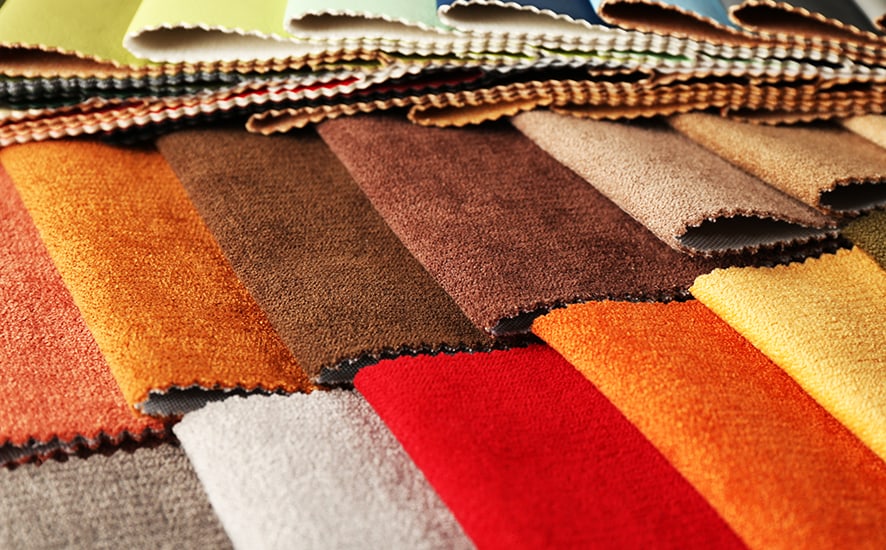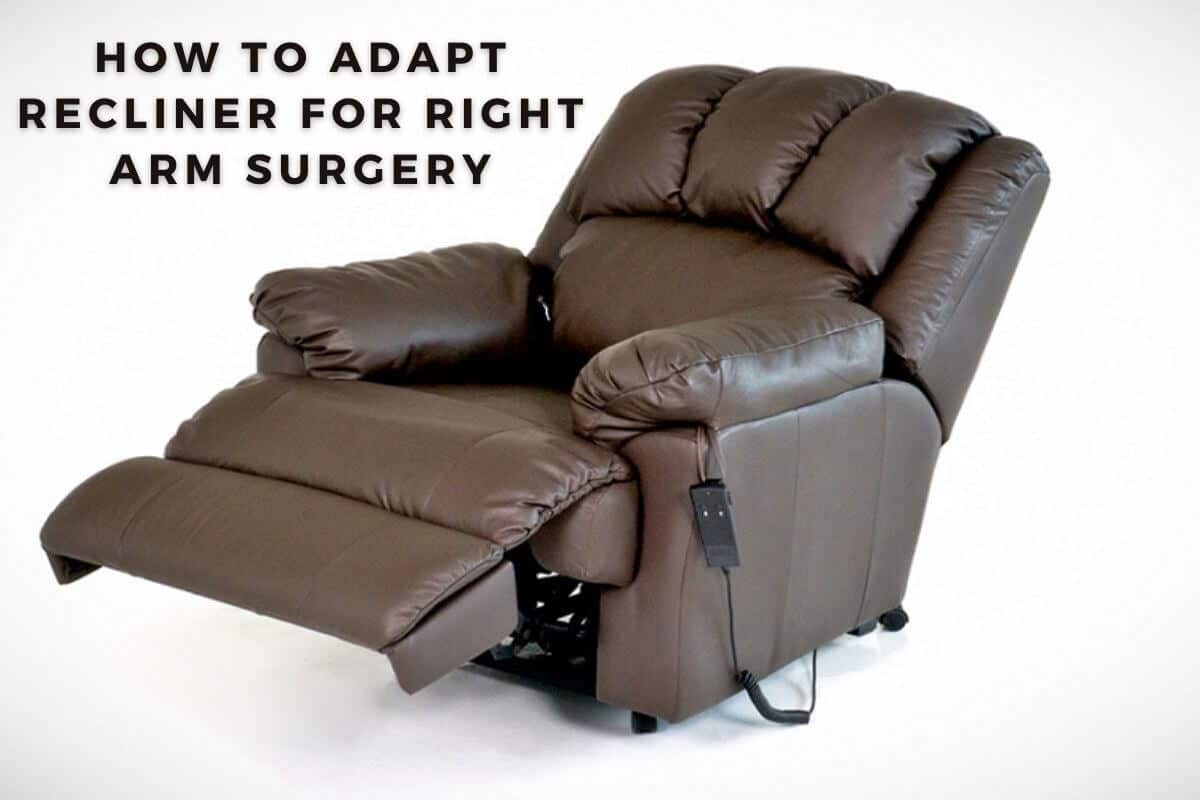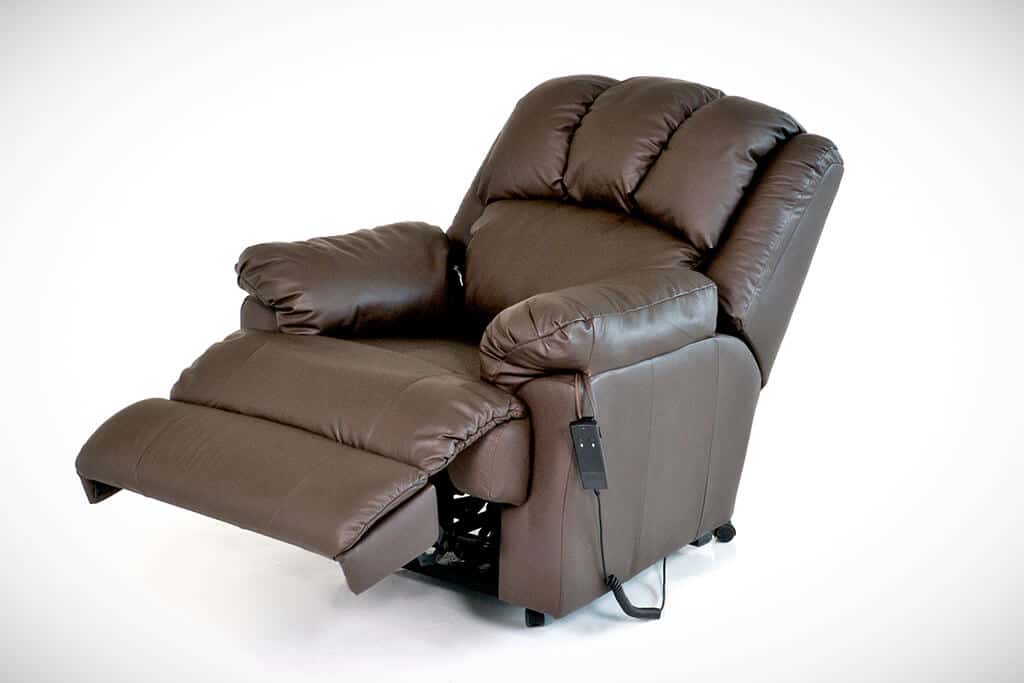
Disclosure: This site is reader-supported & contains affiliate links. We may earn a commission through products purchased using links on this page. Learn more

Entering a fabric store can be nerve-wracking, especially if you are new to the upholstery world. With so many fabric options of different colors and designs piled on the shelves, how do you choose the right upholstery fabric for you?
We have put together a comprehensive guide to help you know your upholstery fabrics. We’ve also included a guide on how to choose upholstery fabric to help you zero in on the best fabric for you.
Table of Contents
What Is Upholstery?
Given that you’ll encounter this term throughout the article, its essential for you to know its meaning.
Upholstery refers to the materials that make up the soft padded covering of armchairs or a sofa. They include the fabric, webbing, padding, and springs.
How To Choose Upholstery Fabric
Choosing upholstery fabric for your furniture can be intimidating, especially when you enter a furniture store with piles of different materials. Some stores may categorize them based on their make, i.e., natural or synthetic, but besides that, there are other factors you should consider. Here are some of those factors:
- The Color
The color of the fabric is usually the most significant factor when choosing the upholstery fabric. This is probably has a crucial impact on your décor, especially if you want it for a large sofa that will dominate the room.
When choosing the upholstery fabric color, ensure it’s one you can live with happily for years. The in-season colors are tricky because trends often change. Also, it will be costly for you to keep up with the trend.
Ask yourself what kind of mood you want to create. For an edgy urban vibe in the room, you can choose new age colors on vintage furniture that will give your room an urban vibe.
According to the mood, solid hues are splendid for any room since they can be spruced up with different colored accents. Using light hues on furniture that dominates a small space can make the room look a little larger.
It might be best to avoid delicately colored fabrics if you have kids or pets. They will get dirty and stained pretty fast.
Further Reading: Best Wall Hugger Recliners for Small Spaces
- Durability
Before you settle for any upholstery fabric, you should consider its life span. A fabric may be aesthetically pleasing, but it wears off quickly.
Consider your family aspects like: is your sofa meant for the living room or bedroom? Do you share your couch with your pet? Do you have children who will wrestle and bounce on the couch?
Generally, engineered fabrics are stronger and more durable than natural ones. So, while cotton fabric may seem like a good choice, it should be restricted to cushions and toss pillows. A combination of cotton, polyester, and rayon, on the other hand, would be perfect for a family room.
If you have kids and pets, leather, microfiber, or viscose may be suitable for a family couch as they can withstand extra wear and tear.
Additionally, if your couch will have regular use, a woven pattern will hold longer than a printed one. So are tight weaves and fabrics with higher thread counts. Avoid heavily textured fabrics as they wear out in patches where you regularly sit.
- Texture
For a chair that you will spend enough time sitting on, the texture of the fabric is crucial. For a chair in the study that you rarely sit on, a rough, scratchy fabric wouldn’t be the end of the world. However, you need a plushy fabric for an armchair or a sofa that you use every day. Use your arm or face to test the softness of the fabric.
- Pattern
As a general principle, you should avoid small patterns on a large piece and vice versa. Your choice of design should foreground the geometry of your furniture. For instance, a striped fabric would look great on a straight-lined chair and make it look taller. Florals and tribal prints, on the other hand, would be fabulous for round-edged sofas and ottomans.
The size of your room is also a consideration when choosing the patterns. Bold patterns thrive in large spaces, while small designs fit well in small rooms. If you want to be adventurous with the patterns, there is no problem. However, we recommend starting with the complex pattern as accents the others slowly and in a balanced manner.
- Style
Your furniture upholstery fabric should complement both the piece of furniture and the room’s interior décor. The safe and straightforward formula would be matching modern fabrics with contemporary furniture and traditional fabric with a traditional-style frame.
However, if you are more adventurous and have the know-how of mixing contrasting elements, you should go for it. The approach will not only give your space originality but also echo your style and personality.
Like patterns and color, the indoor upholstery fabric is crucial in creating the room’s theme. Some fabrics appear formal, while others seem more formal. For instance, linen appears casual and blends well with modern furniture. Silk, on the other hand, is formal and works best in a traditional yet elegant space.
- Maintenance
Besides all the above features, it’s also essential to know how much wear and tear your upholstery fabric can take and the care it requires.
The intensity of wear and tear a fabric can withstand is measured in double rubs. If the upholstery fabric is between 8000-10000 double rubs, it can’t sustain everyday wear and tear. Such material is meant for light use.
On the other hand, if a fabric is 10000-15000 double rubs, it’s for medium use. Residential upholstery fabric should be able to withstand 15000-30000 double rubs while commercial grade fabrics should withstand 100000-250000 double rubs.
Before you make a purchase, first inquire whether the fabric is light, medium, residential, or commercial grade.
We recommend that you go for a low-maintenance fabric. The washable material is the best as it comes with cleaning codes on the label.
- Special Considerations
It would be best if you considered other special factors while selecting the best fabric depending on the environment in which you intend to place your chair. They include:
- Fade resistance: This is important if your chair will be placed outdoors, close to a window or a room that allows plenty of sunlight. Steer clear of fabrics made of cotton and linen as they fade with time.
- Allergies: If you or your loved one suffer from allergies, the best fabric would be made from microfiber as it’s lint-free and doesn’t attract dust.
- Humid conditions: go for a fabric that is mildew resistant.
- Pets and children: If you have young kids and pets, avoid delicate materials such as silk. Distressed leather and vinyl would be the best.
Types of Upholstery Fabrics
There are two categories of upholstery fabric: natural and synthetic fabrics.
Natural fabrics are made from animals or plants, while synthetic fabrics are artificial.
Natural Fabrics
- Linen
Linen is an immensely strong natural fiber that is made from flax. It’s naturally lustrous, soft, and smooth. This fabric naturally resists soiling and pilling. Also, good quality linen is mildew resistant and anti-microbial.
On the downside, linen wrinkles easily, making it more suitable for casual places. Additionally, this fabric doesn’t hold up well to sunlight. Its fibers weaken, and it’s prone to fading.
To add elasticity, linen is usually blended with cotton.
- Cotton
Cotton is such a familiar fabric due to its extensive use in making clothes. The primary reason for its popularity is its breathability (it allows air to pass through) and stays cool during the hot summer days.
The main advantage of cotton is its resistance to fading, wear and tear, and pilling. High-quality cotton is also easy to wash and maintain. Still, it’s relatively cheap compared to other fabrics.
On the downside, this upholstery fabric creases easily. it, therefore, needs to be fixed tightly on a chair.
The best cotton blends should have 45-60% cotton.
- Wool
This material is 100% animal hair. It’s a luxurious choice for upholstery fabric as it has excellent texture and feel. Its longevity is also high, and it keeps its shape, making it one of the best fabrics for furniture.
However, this fabric is less resistant to stains. This makes it difficult to clean and maintain. It can also be scratchy if not blended. For this reason, most wool upholstery fabric comes in a blend.
- Leather
This natural fabric comes from animal hide. Besides giving your room a stylish and sophisticated look, it’s durable and doesn’t fray. In case of minor scratches, you can easily cover them up with leather polish. The fabric is also fade-resistant and easy to clean. Spillages can be cleaned with a damp cloth or a vacuum cleaner without discoloring the fabric.
On the downside, pure leather is quite expensive and doesn’t have many color options. Also, the fabric is not porous enough; hence doesn’t ventilate well. Because of this, the material tends to be very cold during winter and annoyingly warm during summer.
There are two categories of leather to choose from/
- Pure leather: It’s 100% cowhide. It has a rich look, natural shine, and is durable. It’s also the most expensive.
- Suede: It comes with a napped finish. It’s soft to touch and durable. However, it stains easily and mostly requires professional cleaning.
- Silk
Silk is a natural fiber made of protein fiber. Its main component is fibroin, an insoluble protein produced by certain insects to build cocoons.
This fabric has a smooth and shimmery appearance that makes the room shine. Due to its smoothness, It’s also dust resistant.
However, the fabric has no stain resistance and weaken in sunlight. Pure silk upholstery needs a layer of another fabric bonded to its back to give the material stability and help it hold together. It also helps the fabric not to crease easily.
Synthetic Fabrics
These are man-made fabrics. They include:
- Polyester
Polyester is a high-end fabric that is rarely used alone. It mostly comes in a blend with natural fibers such as wool and cotton. The blends add to its strength and make it fade, wrinkle and abrasion-resistant.
This fabric is durable and easy to clean. However, it tends to pill if the double rub rating is low.
- Velvet
Velvet is a woven, tufted fabric made of a short, dense pile of evenly distributed cut threads, giving it a smooth and soft feel. It can be made from cotton, silk, linen, nylon, viscose, or a mixture of different fibers.
Due to its thickness, this upholstery material absorbs large amounts of dye, creating a vibrant tone. However, it’s known as one of the most challenging fabrics to clean and maintain as it tends to flatten and lose its softness, especially when washed with water.
Additionally, velvet material gets permanently stained and wrinkles easily.
- Viscose
Viscose is a human-made fiber made from cellulose which is chemically extracted from trees. This fabric was developed to imitate linen, cotton, and silk.
It’s ranked among the best fabric for upholstery, especially when blended with other fabrics. It is affordable and comes with a luxurious look and a silk-like radiance.
Like cotton, this fabric is breathable hence great for hot and humid climates. It’s also elastic and comes in various colors and styles.
On the downside, this fabric has low abrasion resistance and wrinkles easily. Low-quality viscose can also be damaged by water/moisture.
- Microfiber/Faux Suede
Microfiber is a synthetic fabric made of tightly woven polyester. It is then given a surface abrasion treatment to provide it with a suede look. It is, however, softer and much easier to clean than suede.
This fabric is strong and an excellent upholstery fabric choice for a heavy-use family room or if you have pets. It’s also abrasion and moisture resistant.
- Sunbrella
Sunbrella is a 100% solution-dyed acrylic fabric that was originally made for outdoor use. However, it can also be suitable for indoor furniture.
The sunbrella fabric isn’t porous; thus, liquids form pearls on the surface upon landing. This makes it easy to clean and an excellent upholstery choice for people with pets and children.
Additionally, it is water, mildew, and UV resistant. The fabric has an estimated lifespan of 10 years of outdoor use. It is likely to give you a lifetime of service indoors.
Interesting Reading: How To Reupholster A Recliner: A Step By Step Guide
Which Is the Best Fabric for Upholstery?
The best fabric for your furniture upholstery comes down to your personal preferences, situation, and needs. However, there are a few contenders to choose from.
Generally, synthetic fabrics have a longer lifespan than their natural counterparts, but they may not have the texture you want.
Leather and linen are excellent choices if you are looking for natural fabrics. On the other hand, a polyester blend would be your best bet if you want to go synthetic.
Look out for how much wear and tear an upholstery fabric can withstand. It’s easy to fall for material due to its outward look, but if it needs replacement after a few months, then it’s not worth it.
Once you have the fabric type choice all figured out, now you can get to the fun part, like choosing the color and pattern.
Frequently Asked Questions (FAQs)
What is upholstery fabric?
Upholstery fabric is the soft covering for armchairs, sofas, and other furniture. It covers the foam/padding, springs, and webbing used to make a chair more comfortable.
What is the most durable upholstery fabric?
Though there are many durable upholstery fabrics, microfiber tops the list. It can withstand wear and tear in heavily trafficked rooms such as the living room and family room. Its tough, durable, and is water, stains, and fade resistant. It is also easy to clean and maintain and holds its shape.
For outdoor use, Sunbrella is your go-to fabric. It’s strong and weather resistant. It’s also easy to clean and maintain. With proper care, this fabric can serve you for an estimated lifespan of over ten years.
What is the difference between upholstery fabric and regular fabric?
Regular fabrics are primarily used for drapery (cloth, curtains, and clothing in loose folds). They are also referred to as multipurpose fabrics. Regular fabric is mostly embroidered and is of medium weight,
Upholstery fabric, on the other hand, is used to cover furniture. It’s thicker, stiffer, and heavier. Unlike regular material, it’s woven.
Wrapping It Up
The upholstery fabric of your sofa or recliner is a crucial element- you don’t want to start fighting with stains and snags after a few days or start second-guessing it as soon as your furniture arrives. With this guide in hand, you will be able to choose the best fabric that matches your needs and echoes your personality. For more information on how to reupholster your recliner chair, read this.
Recommended Reading

How To Take Apart A Lazyboy Recliner
Do you want to tighten your Lazyboy recliner or move it to another room? Here are some easy-to-follow dis-assembling, moving, and re-assembling steps to help you.

How To Adapt Recliner For Right Arm Surgery
Are you or your loved one struggling to operate a recliner after a right arm surgery? Here is a handy guide on how to adapt a recliner for a right-hand surgery.

How Much Power Does an Electric Recliner Use?
How much power does an electric recliner use? Depending on the make of your recliner, your recliner could use 14W on standby or 58W in full-motion. Read on.

Pro Guide: How to Move a Recliner Chair Safely
It is advisable to protect your recliner at all costs when moving. For more safe and easy tips when planning to move, indulge in this guide.
